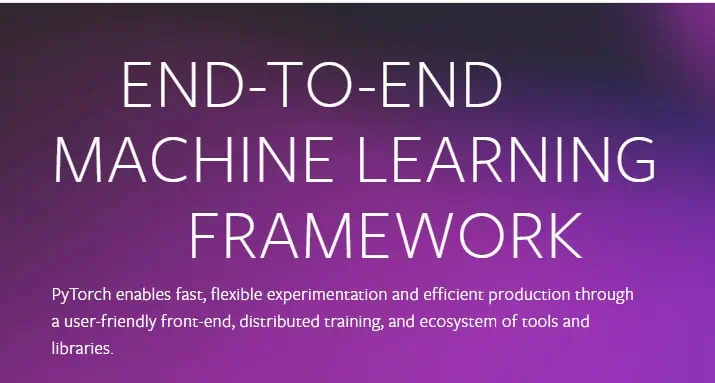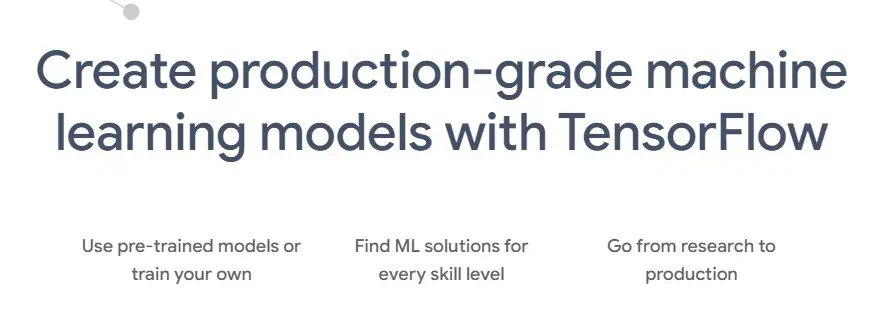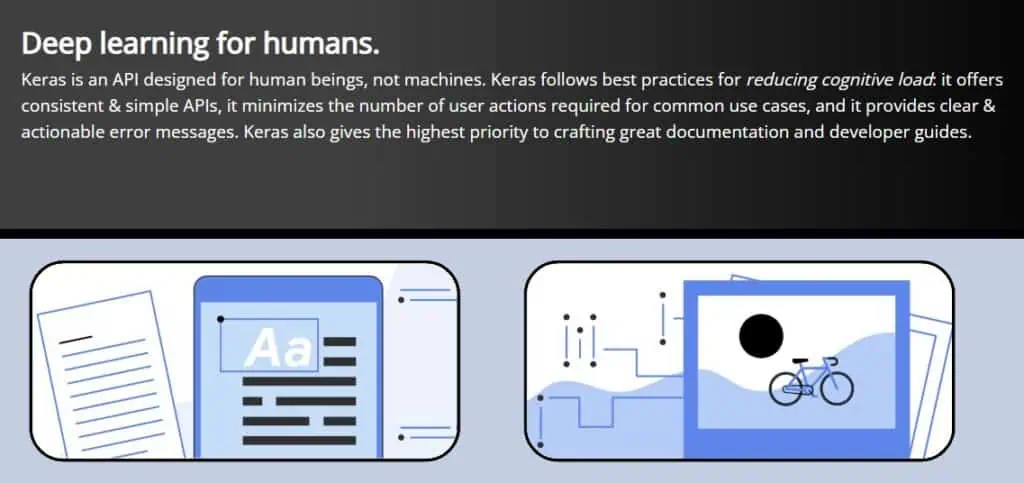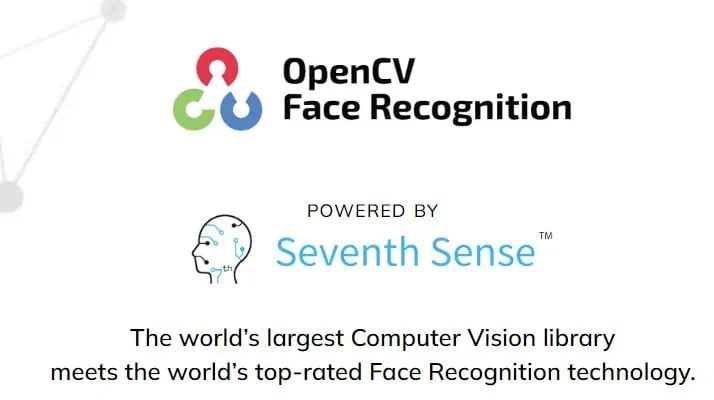Top 8 open source AI models to elevate your projects
Seeking the perfect open source AI models to upgrade your projects or incorporate AI into your business? You’re in the right place! In this extensive article, we delve into the leading 8 open source AI models that can assist you in bringing your work to unprecedented levels.
Let’s do a quick recap of open source AI models.
Open source AI model: what are we talking about ?
An open source AI model is a collaborative approach to artificial intelligence (AI) software development, where programmers from around the world can work together to create and improve AI algorithms and applications.
This concept combines the power of open source software development with the fascinating field of AI, a branch of computer science that focuses on making machines operate in more human-like ways.
AI has several subfields, such as:
- Natural language processing
- Machine learning
- Computer vision
- And robotics
It plays a crucial role in shaping the future of productivity and innovation, often referred to as Industry 4.0.
Using open source AI models allows developers to collaborate on various projects and make their work accessible to the public for further enhancement.
In the context of marketing, AI offers a wide range of functionality – from small assists to running entire campaigns. Some example use cases are:
- Automated social media posts,
- Content creation,
- Personalized emails and data capture,
- And targeted advertising for pay-per-click campaigns.
However, it’s essential to be aware of potential biases and ethical considerations when working with open source AI frameworks.
Since these models are developed collaboratively, incorrect or incomplete information may be introduced during the process. To ensure the best possible results and avoid unintended consequences, developers must carefully validate and test their algorithms before deployment.
But enough talk, let’s get to know our first open source AI model right away!
Also read : Emerging Features for ChatGPT: Leak Reveals User Profiles and File Download
1. PyTorch
Imagine an AI framework that allows you to effortlessly build machine learning algorithms, create remarkable applications, and transform ideas into reality. Say hello to PyTorch!

Developed as an optimized Python framework, PyTorch has gained popularity among researchers and developers working with TensorFlow for its extensive interface to hardware accelerators and easy-to-navigate API.
However, it’s worth noting that PyTorch can have slow response times when dealing with GPUs.
PyTorch offers a one-stop-shop experience for all your AI project needs. With vast libraries and datasets to choose from, this platform is well-suited for developers already coding in Python.
PyTorch’s object-oriented approach helps bundle usable chunks of code, which can be plugged into more extensive sequences, making collaboration among programmers a breeze. Additionally, for non-Python coders, PyTorch provides a C++ interface. The best part? PyTorch is absolutely free to use!
Here’s a summary of the key features you should know about PyTorch:
| Characteristics | Details |
| Price | Free and Open-Source |
| Usability | Easy-to-use for Python developers and provides a C++ interface |
| Best Suited For | Machine learning, deep learning, and natural language processing (NLP) |
| Type | AI Framework/Framework for machine learning |
| Languages Supported | Python and C++ |
| Hardware Compatibility | Extensive interface to hardware accelerators, GPUs, and more |
| APIs | User-friendly and easy-to-navigate |
| Response Time | Can be slow when dealing with GPUs |
In a nutshell, PyTorch is a versatile and powerful AI framework designed to help you develop cutting-edge applications in machine learning and NLP.
Its optimized Python structure, easy-to-learn interface, and collaborative approach make it the perfect tool for developers of all levels. Excited to venture into the world of PyTorch? Give it a try and unlock the incredible potential of artificial intelligence!
2. TensorFlow
Ever wondered how AI can recognize images, understand speech, or even translate languages? Meet TensorFlow, the star of the AI world!
Created by Google’s Brain Team, this open-source framework is designed to build and utilize machine learning neural networks. With its ease of setup and scalability, it’s no wonder that TensorFlow is the most favored deep learning framework on GitHub.

TensorFlow caters to both beginners and experts by supporting a wide range of modern deep learning templates.
Whether it’s Convolutions, LSTM, BiRNN, BatchNorm, PReLU, Residual networks, or Generative networks – TensorFlow has got everyone’s back!
It fosters a collaborative environment for programmers to create innovative solutions while reaping the benefits of existing frameworks. Ready to dive into the world of TensorFlow? Let’s give you a quick rundown of some key features that make TensorFlow stand out:
| Characteristics | Details |
| Price | Free and Open-Source |
| Popularity | One of the most favored deep learning framework on GitHub. |
| Usability | Beginner-friendly and suitable for professionals |
| Best Suited For | Deep learning, machine learning, and neural networks |
| Type | AI Framework/Framework for machine learning |
| Languages Supported | Python, JavaScript, Swift and more |
| Platforms Supported | Servers, Cloud, Mobile devices, Edge devices, Browsers and more |
| Hardware Compatibility | GPUs, CPUs, mobile/embedded platforms, and Google’s TensorFlow Processing Unit (TPU) |
In conclusion, TensorFlow is an exciting and powerful AI framework.
Its open-source nature, wide range of applications, and easy-to-learn structure make it an attractive choice for both beginners and experts in the field of artificial intelligence.
3. Open AI
Behold OpenAI, a groundbreaking player in the field of natural language processing (NLP) AI programs.
They offer a revolutionary model called Codex that transforms natural language into code in the programming language of your choice.
OpenAI enables users to access and customize their models to create unique, powerful applications.
Taking a step beyond what Alexa and Siri offer, OpenAI synthesizes its own natural language answers from the information it gathers, rather than merely pointing to a website and reading aloud.
To help you experiment with their technology, OpenAI even offers an $18 credit for three months. After that period, the pricing becomes token-based, depending on your usage.
Let’s delve deeper into some key features and milestones of OpenAI:
| Characteristics | Details |
| Field | Natural Language Processing AI programs |
| Renowned Model | Codex – a model that translates natural language into code |
| Pricing | $18 free credit for three months, followed by token-based pricing depending on usage |
| Founded | 2015 in San Francisco by Elon Musk, Sam Altman, and other investors |
| Major Projects | OpenAI Gym (2016), Universe (2016), GPT-3 (2020), Dall.E (2021) |
| Objective | Develop user-friendly AI that benefits humanity and make programming software and applications more accessible to the general public |
| Partnerships | Microsoft Corporation (2019) |
In summary, OpenAI is a research organization committed to advancing AI technology for the betterment of humanity.
With its focus on creating user-friendly AI applications and tools like Codex, it aims to make programming software and applications more accessible to the masses.
4. Keras
Introducing Keras, an AI framework with a human-friendly application programming interface (API) designed to simplify the development of deep learning prototypes.
Keras enables easy sharing of frontend components and can export models that run on browsers, iOS, and Android platforms.

Compatible with the latest versions of TensorFlow, this high-level neural network API is perfect for programmers who prefer a streamlined user interface when working with TensorFlow.
One of the best things about Keras is that it’s entirely free to use!
Moreover, it focuses on artificial neural networks and operates on top of TensorFlow, CNTK, and Theano.
Ideal for open-source AI projects requiring quick prototyping, Keras supports both convolutional and recurrent networks and runs efficiently on CPUs and GPUs.
Instead of dealing with low-level operations like other alternatives, Keras utilizes libraries from related deep learning frameworks like TensorFlow or Theano for low-level computations such as tensor products and convolutions.
It also offers a high-level API for creating specifying layers, configuring various models, and building them with loss and optimizer functions.
Let’s take a look at some key features of Keras:
| Characteristics | Details |
| Price | Free and Open-Source |
| Usability | User-friendly interface ideal for both beginners and experts |
| Best Suited For | Deep learning applications like image classification, natural language processing, and speech recognition |
| Type | High-level neural network API |
| Languages Supported | Python |
| Backend Compatibility | TensorFlow, Theano, and CNTK |
| Hardware Compatibility | CPUs and GPUs |
In summary, Keras is an impressive high-level neural network API built with Python, offering a user-friendly interface for developing deep learning models quickly and efficiently.
Its compatibility with various backends like TensorFlow, Theano, and CNTK makes it a versatile choice for experts and beginners alike.
5. Caffe
Introducing Caffe, an open-source deep learning framework that emphasizes speed and efficiency in creating convolutional neural network (CNN) templates.
Primarily used for image recognition, object detection, and image segmentation, Caffe is designed to deliver optimal results with remarkable performance.
Caffe2 builds upon the strengths of its predecessor by providing an even more efficient and streamlined trained inference engine based on neural networks.
The end goal of Caffe2 is achieving outstanding results with greater efficiency compared to Caffe. As an open-source library, Caffe2 integrates seamlessly with the PyTorch framework, making it easier than ever to create deep learning models.
The framework allows developers to quickly build scalable frameworks while avoiding the typical computational overhead associated with traditional models.
Let’s have a look at some key features of Caffe:
| Characteristics | Details |
| Type | Open-source deep learning framework concentrating on CNN templates |
| Usability | Focuses on speed and efficiency |
| Primary Use Cases | Image recognition, object detection, and image segmentation |
| Integration | Compatible with the PyTorch framework |
| Caffe2 Features | Improved efficiency and performance over Caffe |
| Languages Supported | Python |
In a nutshell, Caffe is a powerful deep learning framework that prioritizes speed and efficiency in developing convolutional neural network models.
With Caffe2, you can leverage the full potential of your machines while achieving maximum efficiency.
6. OpenCV
Unlock the world of computer vision with OpenCV, an open-source AI platform designed for a wide range of applications.
Its library, written in C, enables compatibility with various platforms, from “PowerPC Macs to robotic dogs.” Furthermore, OpenCV includes a new C++ interface and provides wrappers for Java, Python, and other languages to promote cross-language development.

Focused on developing AI specifically for computer vision applications, OpenCV is not only versatile and efficient but also free to use, even for commercial purposes.
It caters to video, CCTV, and picture analysis tasks and is published under a BSD license. With over 2,500 state-of-the-art and classic algorithms available in its C++ library, OpenCV empowers users to detect faces in images or movies, identify objects, and analyze human emotions and behavior in videos.
Additionally, it offers over 500 functions spanning various visual themes like:
- Industrial product inspection
- Medical imaging
- Security
- User interface
- Camera calibration
- Stereo vision
- And robotics
Moreover, OpenCV features a comprehensive Machine Learning Library (MLL) mainly concerned with statistical pattern detection and clustering.
Let’s explore some essential features of OpenCV:
| Characteristics | Details |
| Type | Open-source AI platform for computer vision |
| Usability | Versatile and efficient for various computer vision applications |
| Languages Supported | C++, Java, Python and more via wrappers |
| License | BSD License – Free for academic and commercial usage |
| Algorithms and Functions | Over 2,500 algorithms and 500 functions for various visual themes |
| Machine Learning Library | Focused on statistical pattern detection and clustering |
In conclusion, OpenCV is a powerful, open-source AI platform perfect for image processing and computer vision tasks. Its versatility, efficiency, and broad compatibility make it an excellent choice for developers seeking to create innovative applications in the realm of computer vision. So, delve into the fascinating world of OpenCV and discover its remarkable potential!
7. HuggingFace Transformers
Discover the fascinating world of natural language processing (NLP) with HuggingFace Transformers, a popular open-source library designed to create NLP models based on advanced transformer architectures such as BERT and GPT-2.
Loved by researchers and developers alike, HuggingFace Transformers impresses with its user-friendly APIs and an extensive collection of up-to-date pre-trained frameworks.
The library’s transformer libraries are extensively utilized in NLP tasks, allowing users to create custom models or fine-tune existing ones with ease.
HuggingFace Transformers currently provides general-purpose architectures like BERT, GPT-2, XLM, DistilBert, and XLNet for natural language understanding (NLU) and natural language generation (NLG), boasting over 32 pre-trained models in 100+ languages.
With the latest version of the library, users can effortlessly train state-of-the-art models in just three lines of code and preprocess datasets in under ten lines, eliminating the need for PyTorch to load models.
Moreover, the library simplifies the deployment of state-of-the-art models by streamlining topologies, frameworks, and pipelines. Here’s a snapshot of some of HuggingFace Transformers’ key features:
| Characteristics | Details |
| Type | Open-source library for NLP based on transformer architectures |
| Usability | User-friendly APIs for creating custom models or fine-tuning pre-trained models |
| Architectures Supported | BERT, GPT-2, XLM, DistilBert, XLNet, and more |
| Pre-trained Models | Over 32 pre-trained models in 100+ languages |
| Efficiency | Train S.O.T.A. models in just three lines of code and preprocess datasets in under ten lines |
In summary, HuggingFace Transformers is an impressive library that makes it easy to develop powerful NLP models based on cutting-edge transformer architectures.
Its user-friendly nature, combined with a wide range of pre-trained models and support for numerous languages, makes it a go-to choice for developers delving into the realm of natural language processing.
8. Fast.ai
Meet Fast.AI, an open-source AI project that aims to democratize deep learning, making it accessible to everyone.
It includes APIs for various data types, such as:
- Vision
- Text
- Tabular
- And time-series analysis
- As well as collaborative filtering
The release of Fast.AI v2 in August 2020 brought significant improvements in speed and adaptability when implementing deep learning frameworks.
Fast.AI strikes a perfect balance between Keras’ clarity and development speed with PyTorch’s customizability. Its library offers different levels of API catering to various model building needs: mid-level, high-level, and low-level APIs.
Fast.AI is known for its accessibility and quick-to-produce, highly flexible nature and its layered architecture.
Here’s a glimpse into the key features of Fast.AI:
| Characteristics | Details |
| Type | Open-source deep learning library |
| Usability | Easy-to-learn API for model building with multiple API levels |
| Data Types Supported | Vision, text, tabular, time-series analysis, and collaborative filtering |
| Customizability | Combines Keras’ clarity and development speed with PyTorch’s customization options |
| Optimization Algorithms | GPU-optimized computer vision library that is extendable in pure Python |
| Callback System | 2-way callback system that can access and modify any part of the data, model, or optimizer during training |
| Data Block API | New data block API that further distinguishes FastAI |
In a nutshell, FastAI is a user-friendly deep learning library designed for quick results and ease of use.
Also read: Midjourney: everything you need to know about the AI capable of creating ultra-realistic images
With its layered architecture and multiple API levels, it enables users to modify the high-level API or add specific behaviors to suit their needs. If you’re looking for an approachable and productive deep learning library, give FastAI a try and unlock the potential of artificial intelligence!
Best open source AI models in a few words…
In conclusion, in this article we introduced you to the top 8 open-source AI models to help you elevate your projects, creating new tools, providing a wide range of choices to suit developers, researchers, and learners with various experience levels and requirements.
From TensorFlow for beginners in machine learning to OpenAI for large-scale data processing tasks, these open-source models cover a diverse set of applications across multiple domains such as image recognition, natural language processing, and computer vision.
It’s crucial to choose the right model based on your project’s needs and your level of expertise to achieve the best results. With these options available, you’re well-equipped to select the best frameworks that will take your projects to new heights.